For On Space Time Foam, his new installation at the HangarBicocca, Saraceno conceived a large transparent membrane (which he amusingly calls la lasagna) that visitors can get into. Folded in three layers, it is suspended at 25-metres above the ground, providing a radical bodily experience. Domus asked him eight little questions in order to have access to the ideas behind this new piece and his ever-expanding universes.
Filipa Ramos: What is space?
Tomás Saraceno: What I ask myself is what is there before space, and time, and what is that moment of singularity when everything came into being, that quantum foam which is a bubbling and sparkling space. On YouTube there are some videos that show what happens when you put corn flour on a speaker; it is incredible, the flour assumes strange forms with the vibration of sound — similar to Paul Davie's drawing that I used for the project at HangarBicocca — it creates spheres that seethe and break like membranes. I conceive space as a tympanum, a membrane that allows you to listen because it vibrates. The universe could be a membrane, somehow close to what we have at the show: multiple layers of membranes vibrating, like one-dimensional, flat universes. If one layer touches another they make space and time collapse and form a black hole. String theoreticians have speculated that the Big Bang — the origin of our known cosmos — emerged from two gigantic membranes that crashed into one another, sparking the expansion of space and matter.
Video by Andrea Basile
What is weight?
In an astrophysical context I would call it mass, which is what wraps and shapes space and time. Mass is always relative. When you do a parabolic flight, the plane remains in free fall and you weigh nothing! According to Einstein, in the same way that a large ball placed on a elasticated cloth stretches the fabric and causes it to sag, so planets and stars warp space-time. A marble moving along a cloth will be drawn towards the ball, as the Earth is to the Sun, but not fall into it as long as it keeps moving. That is what is happening in the exhibition: if a very big person enters there, the membrane sinks. If there are five persons very close together, it will not be easy for them to get out of there because their weight pushes them down, which is a sort of sociological black hole. So I am trying to weave cosmic and sociological waves with the help of the concept of proxemics as developed by the anthropologist Edward T. Hall.
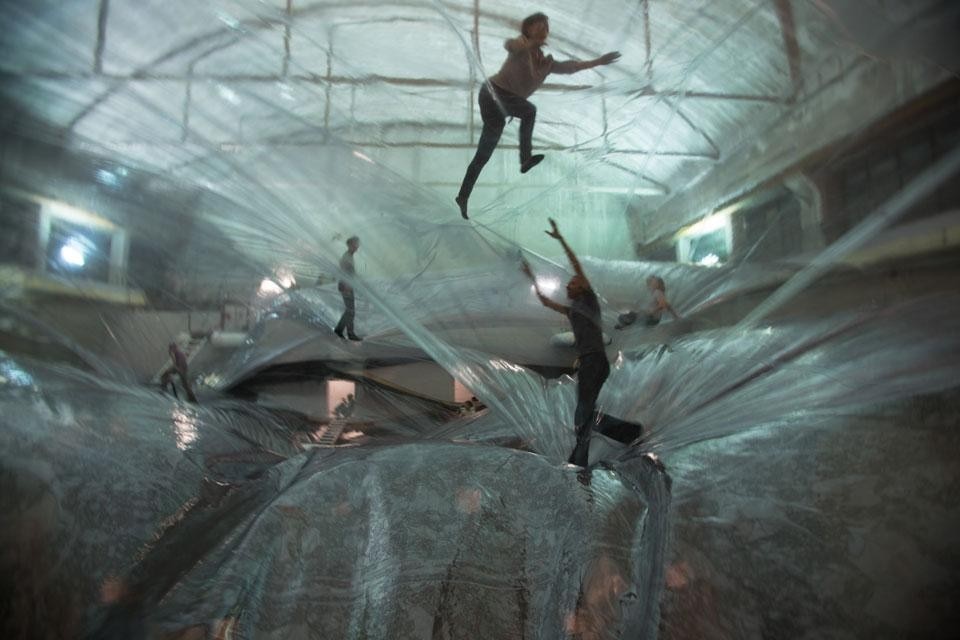
To continue with proxemics, imagine a room full of people where suddenly one of them receives a very important nomination. From that moment onwards, the distance that you had talking with him grows and space is formed between you and him. That is what proxemics does: it analyses how space is conditioned and measured according to our knowledge and cultural background. This project will include a physical demonstration of how individuals form space by relating to each other. Remember this is a lasagne-like structure, with no space between its sheets. When you go in, the weight of your body forms space by stretching and opening the material as you transit. It is difficult to picture a more co-related and co-dependent space than that one! Up there, any of my movements will condition yours and those of everybody else.
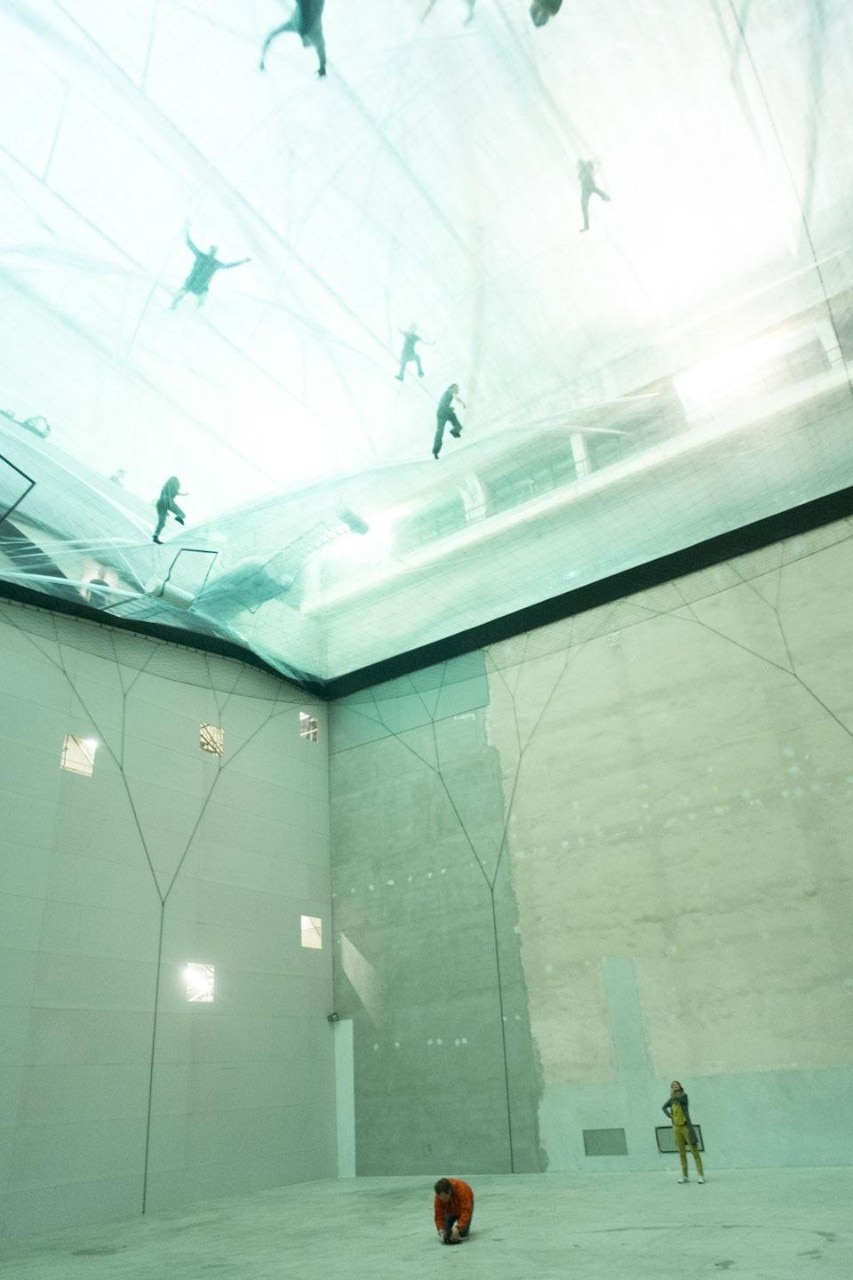
It's when something sounds good, even when you don't know what it is. It's what happens in poetry, when you read something and it has a good cadence. It is about alternation and repetition, marked by the regulated succession of opposite elements, the dynamics of the strong and weak beat, the played sound and the inaudible but implied pause, the long and short note. The Fermi paradox illustrates the contradiction between the high probability of the existence of live in outer space and our lack of contact with it. Enrico Fermi is famous for exclaiming: "Where is everybody?" inquiring about the whereabouts of everyone in the universe. Perhaps we have never managed to have any contact with anyone because we ever managed to play a unison musical piece. I have been talking with Bruno Latour about collaborating in a project for a theatre play he is doing in Toulon. I thought of transforming all the nets and spheres of the Venice Biennale work, Galaxy forming along filaments, like droplets along the strands of a spider´s web, in strings, in a huge collective instrument ready to be played. Let us invent an instrument that all the humans in the planet can play at the same time, so that when you play one string it reverberates in all the other strings. That will tune us all. When we are able of producing a harmony as a species then maybe somebody else will hear us. It is like what is happening at the HangarBicocca, I am trying to make people engage and tune with each other.
Let us invent an instrument that all the humans in the planet can play at the same time, so that when you play one string it reverberates in all the other strings. That will tune us all. When we are able of producing a harmony as a species then maybe somebody else will hear us
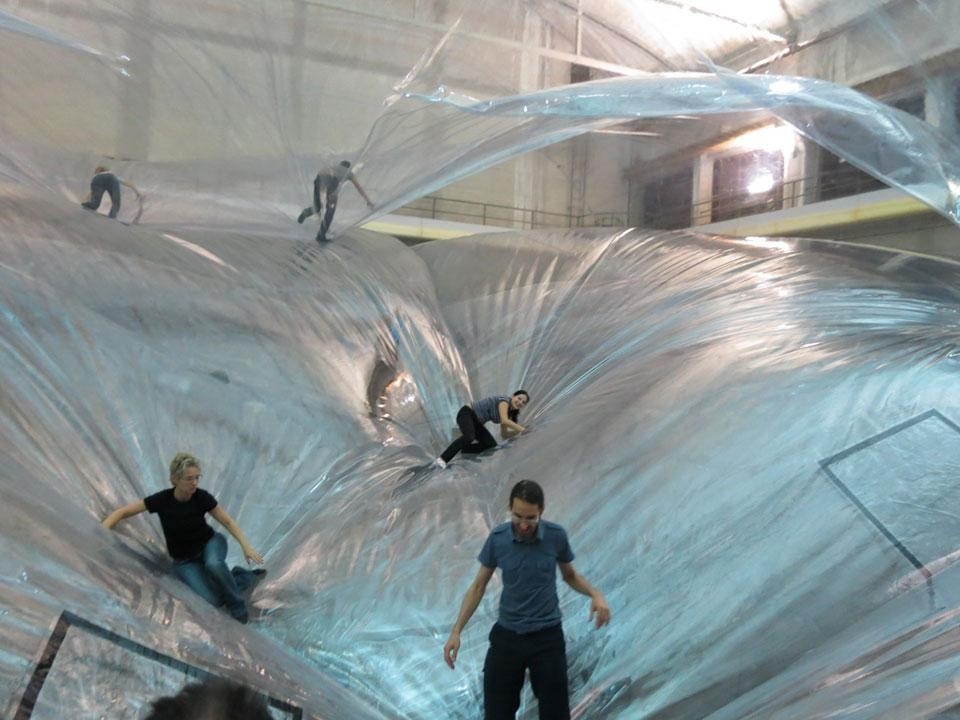
Stephen Hawking tells a beautiful story for understanding displacement. He recounts how "a few years ago the city council of Monza barred pet owners from keeping goldfish in curved fishbowls, explaining that it is cruel to keep a fish in a bowl because the curved sides give the fish a distorted view of reality. Aside from the measure's significance to the poor goldfish, the story raises an interesting philosophical question: How do we know that the reality we perceive is true? The goldfish is seeing a version of reality that is different from ours, but can we be sure it is any less real? For all we know, we, too, may spend our entire lives staring out at the world through a distorting lens." Displacement is like being a fish inside a bowl.
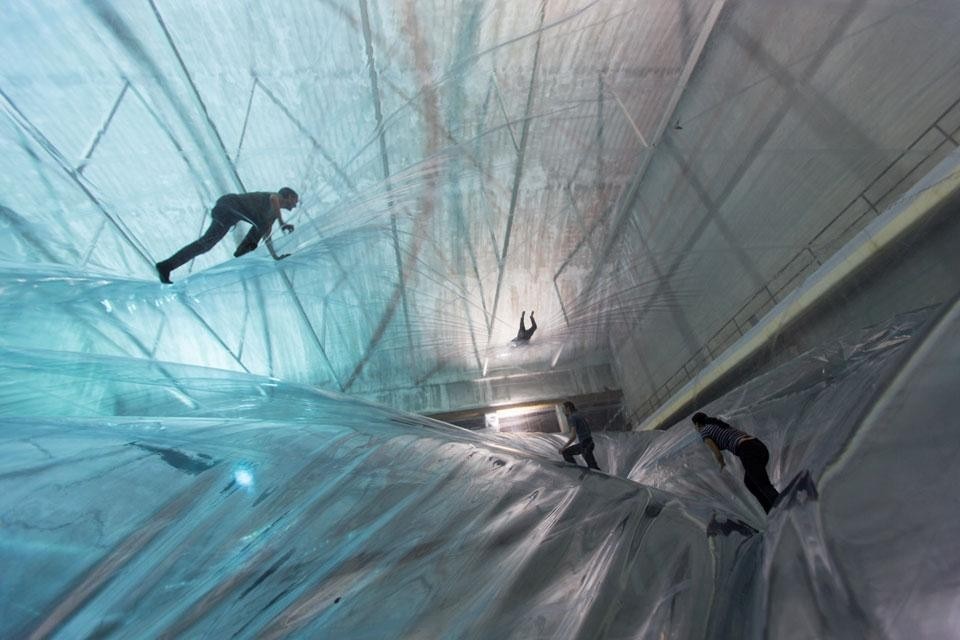
Do you know that most spiders are blind? They perceive the world through vibrations. They also do something called ballooning: they hang from a tree and when the wind is strong enough they take off! They can travel very long distances and cross entire continents. It must be amazing, to be blind and to fly above the sea on a balloon! I like to think of architecture as a computer system, as the composition of a poem. Architecture not only as building houses but also as a way of organising and understanding something that is not exclusively related to humans.
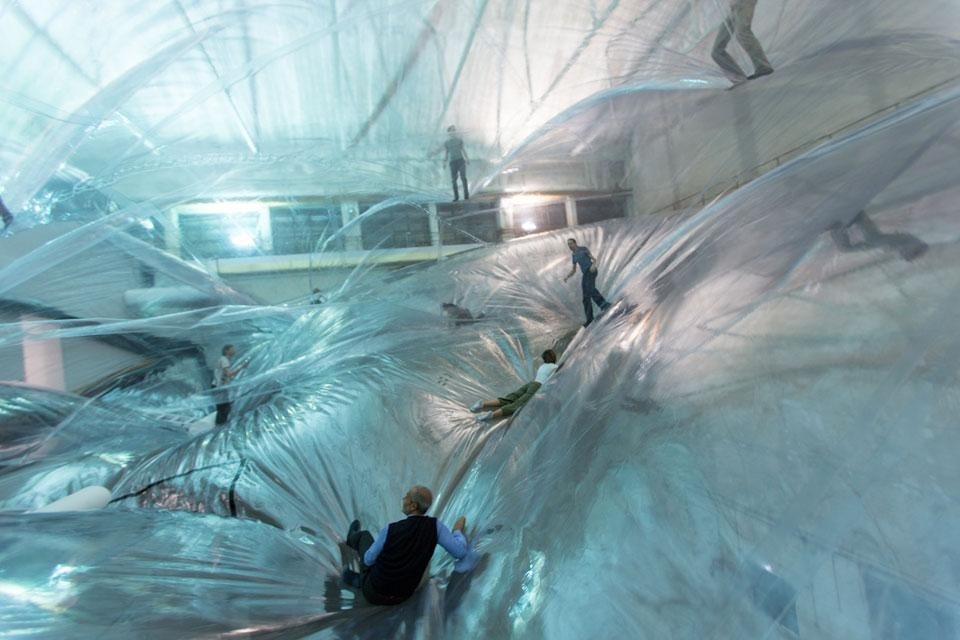
It is a constant necessity. It can also be another dimension, as when you sleep, which is also a necessity because everyone needs to sleep. You spend one third of your life in another dimension, dreaming. Sometimes you wake up and had an awful nightmare, but others you had a beautiful dream that you want to follow. When you are awake you have to make sure that you have the necessary persistence and resistance to make it happen.
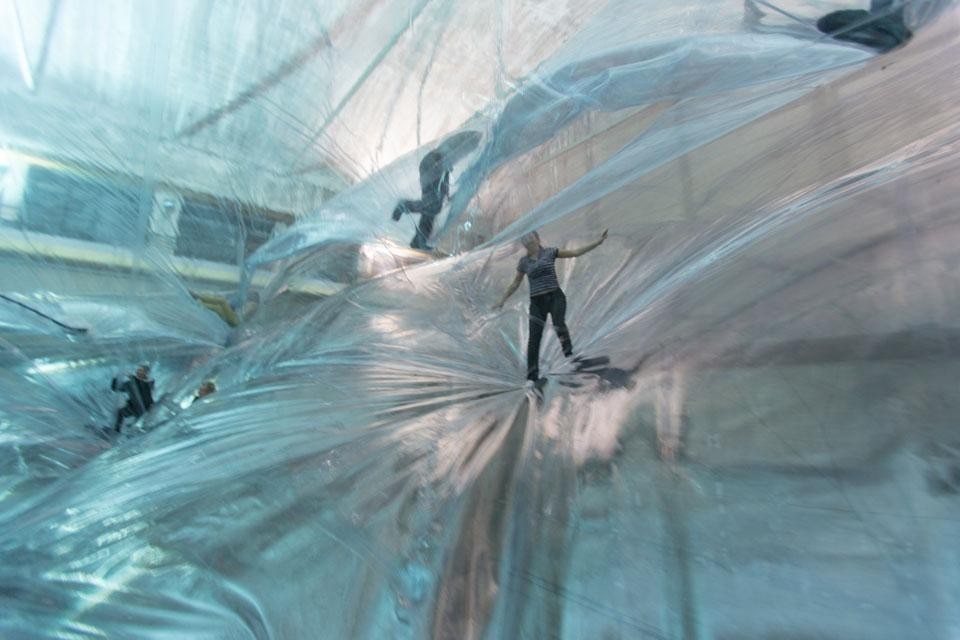
This week the mother of the skydiver Felix Baumgartner published a drawing of his done when he was five, in which he depicted himself jumping with a parachute. He had a huge desire and he managed to fulfil it! That shows how you can commit yourself to your dreams and do it, even in an unconscious way. We thought it would be fantastic if after showing this piece at the HangarBicocca, it became a floating biosphere above the Maldives. Since I am the inaugural Visiting Artist at the MIT Center for Art, Science & Technology (CAST), maybe together with them and and Pirelli we can make flying cities take off once more.
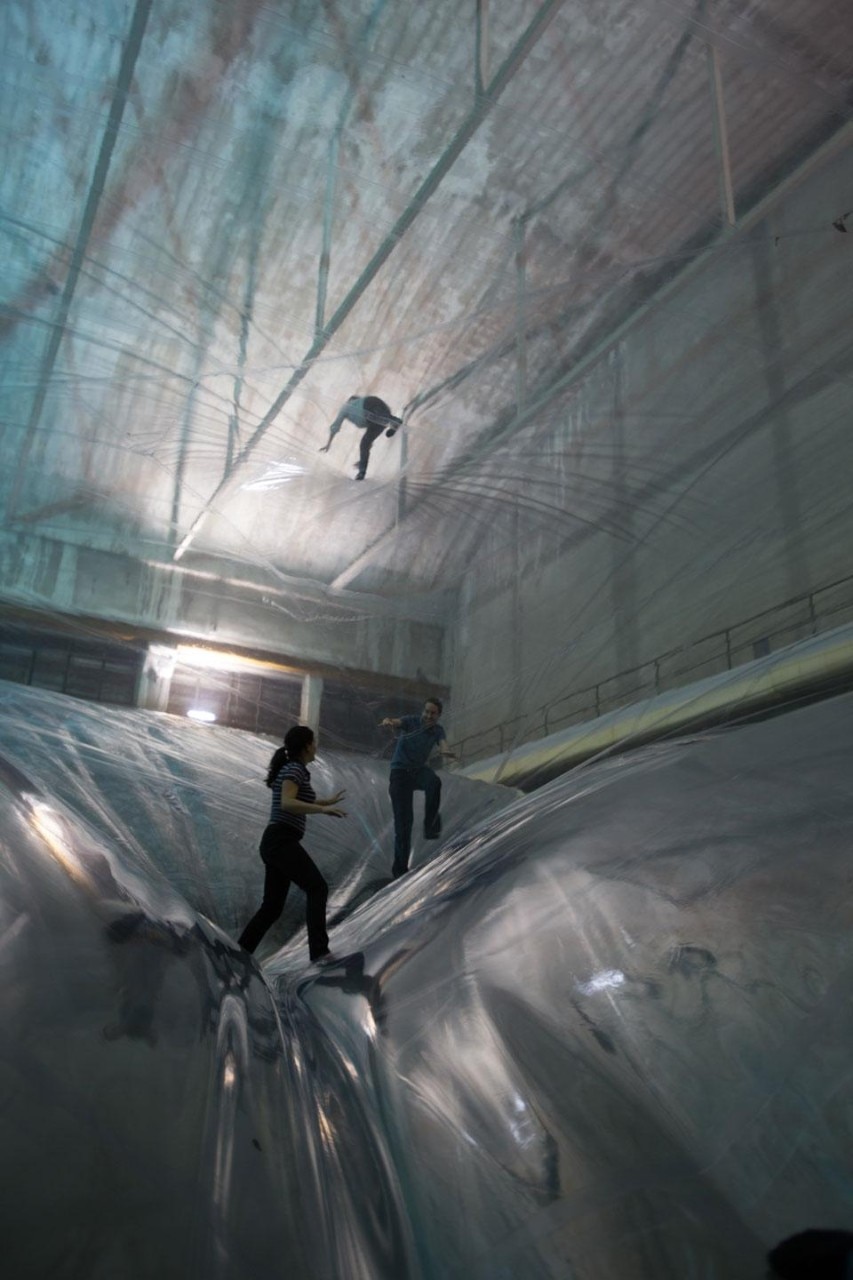
Tomás Saraceno: On Space Time Foam
HangarBicocca
Via Privata Chiese 2, Milan

